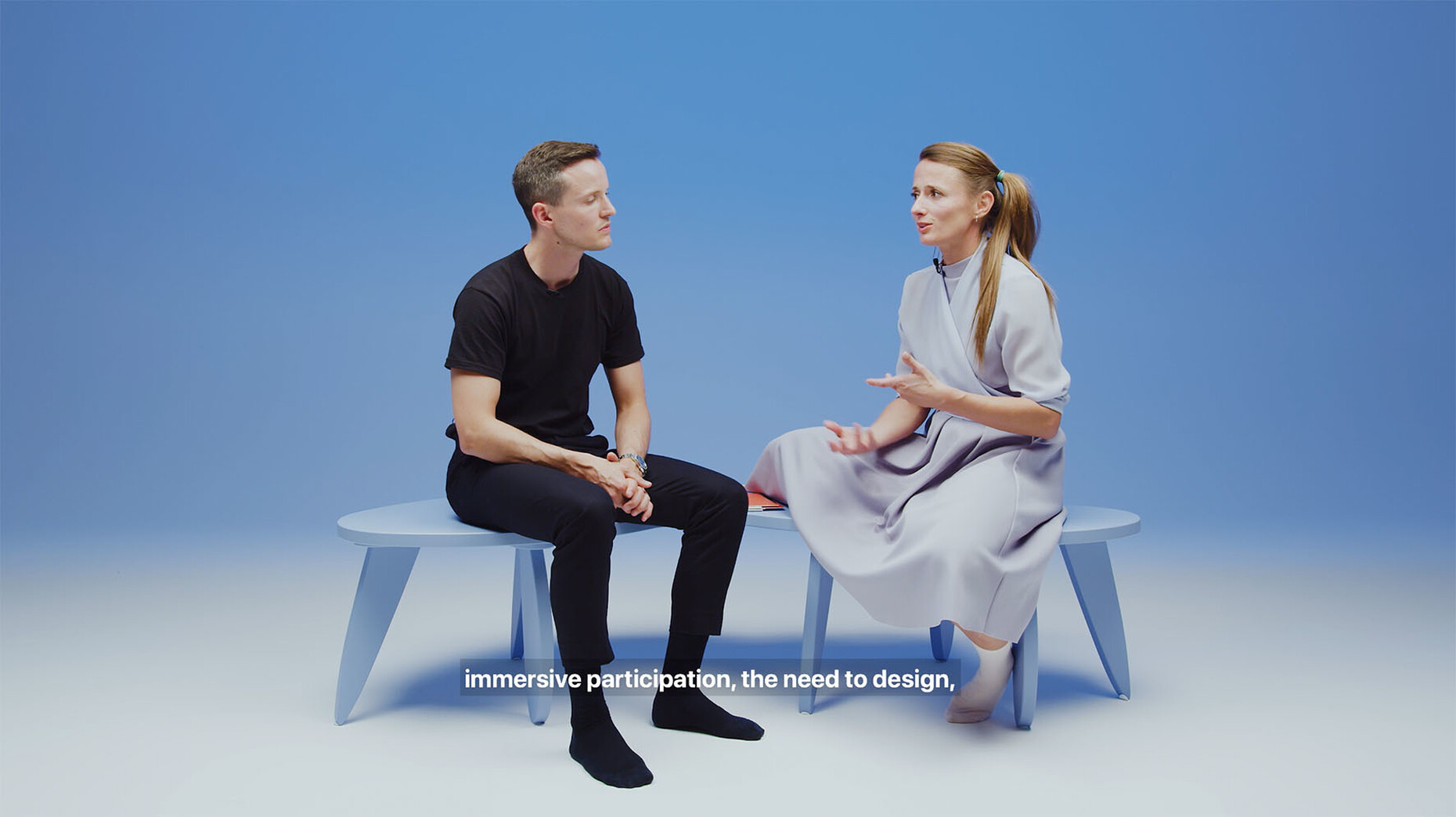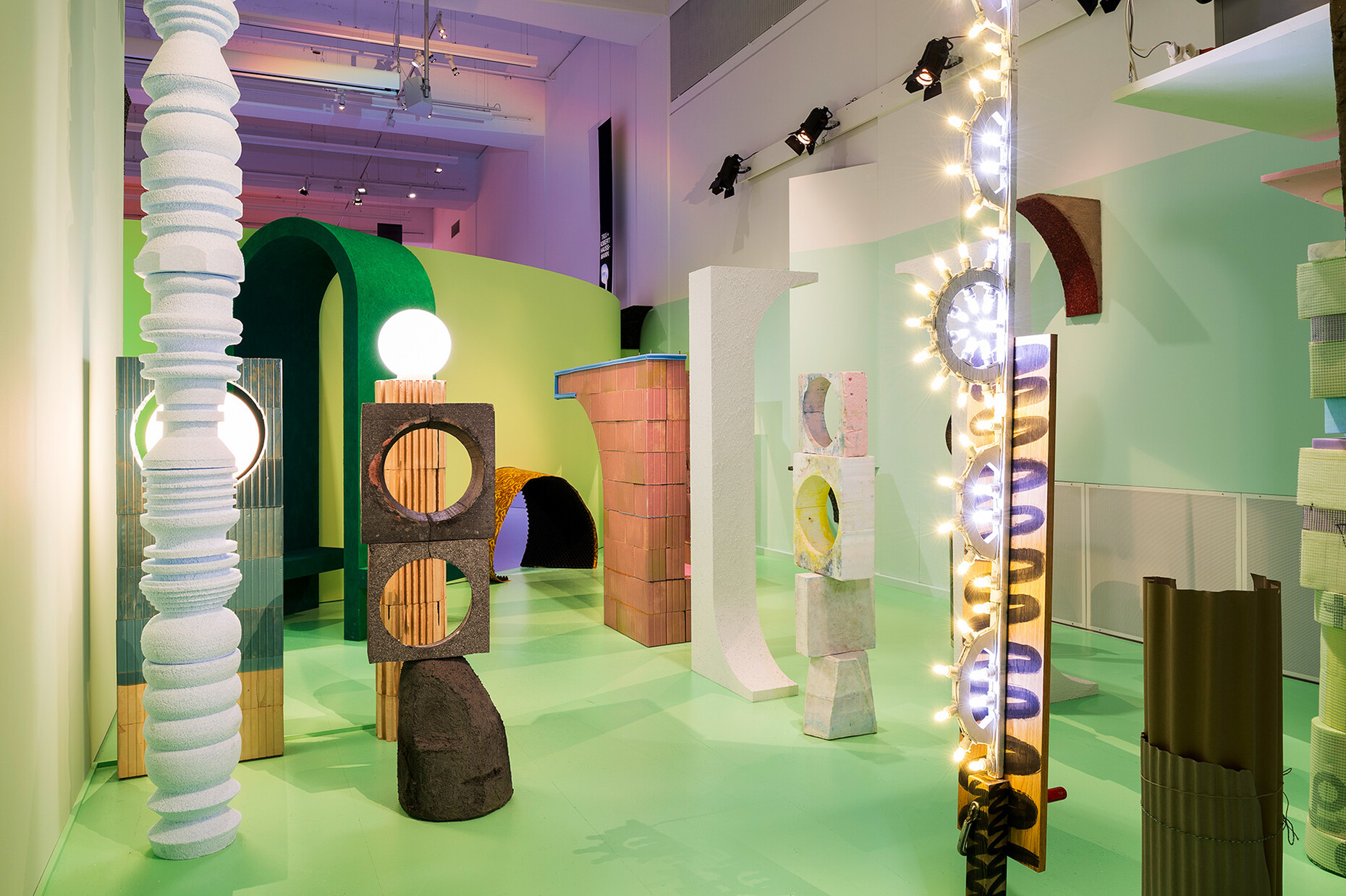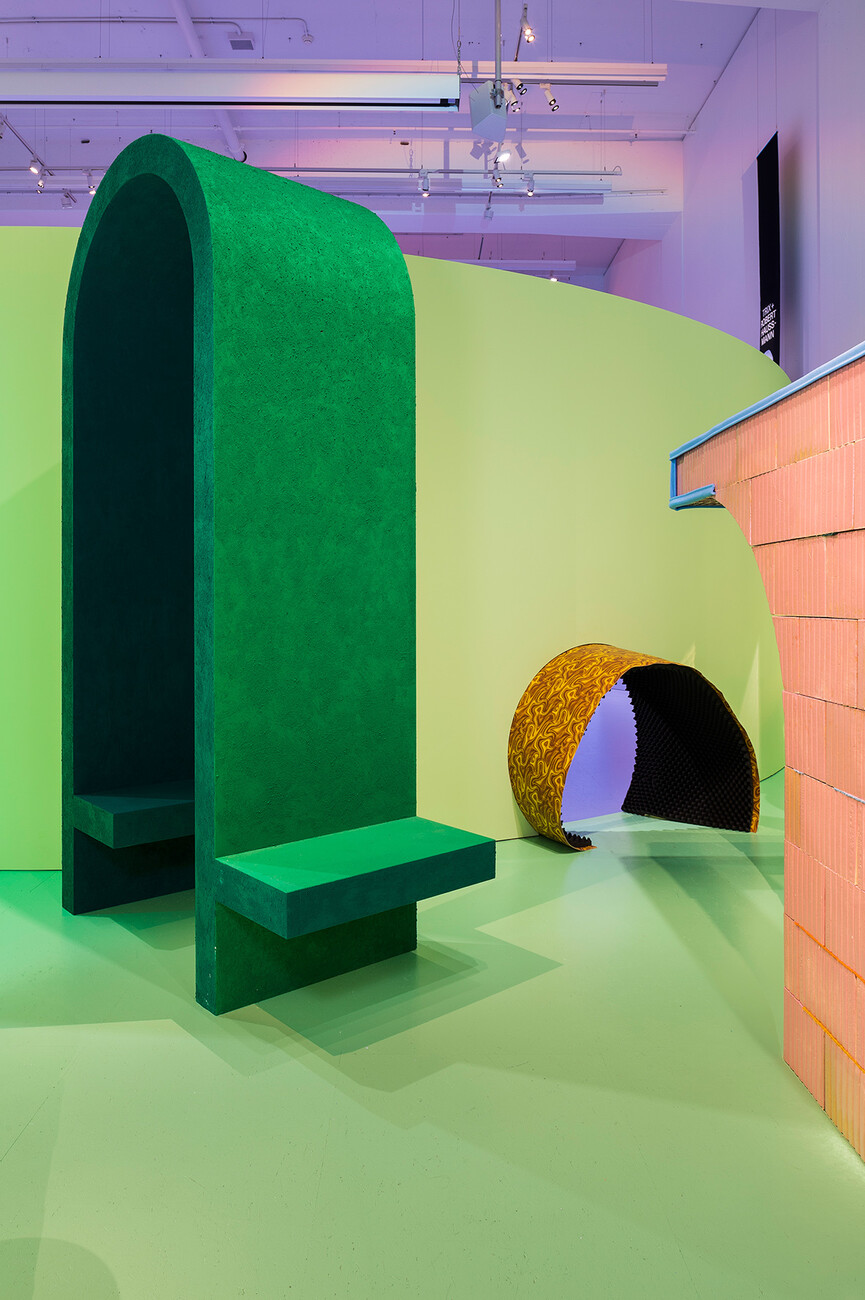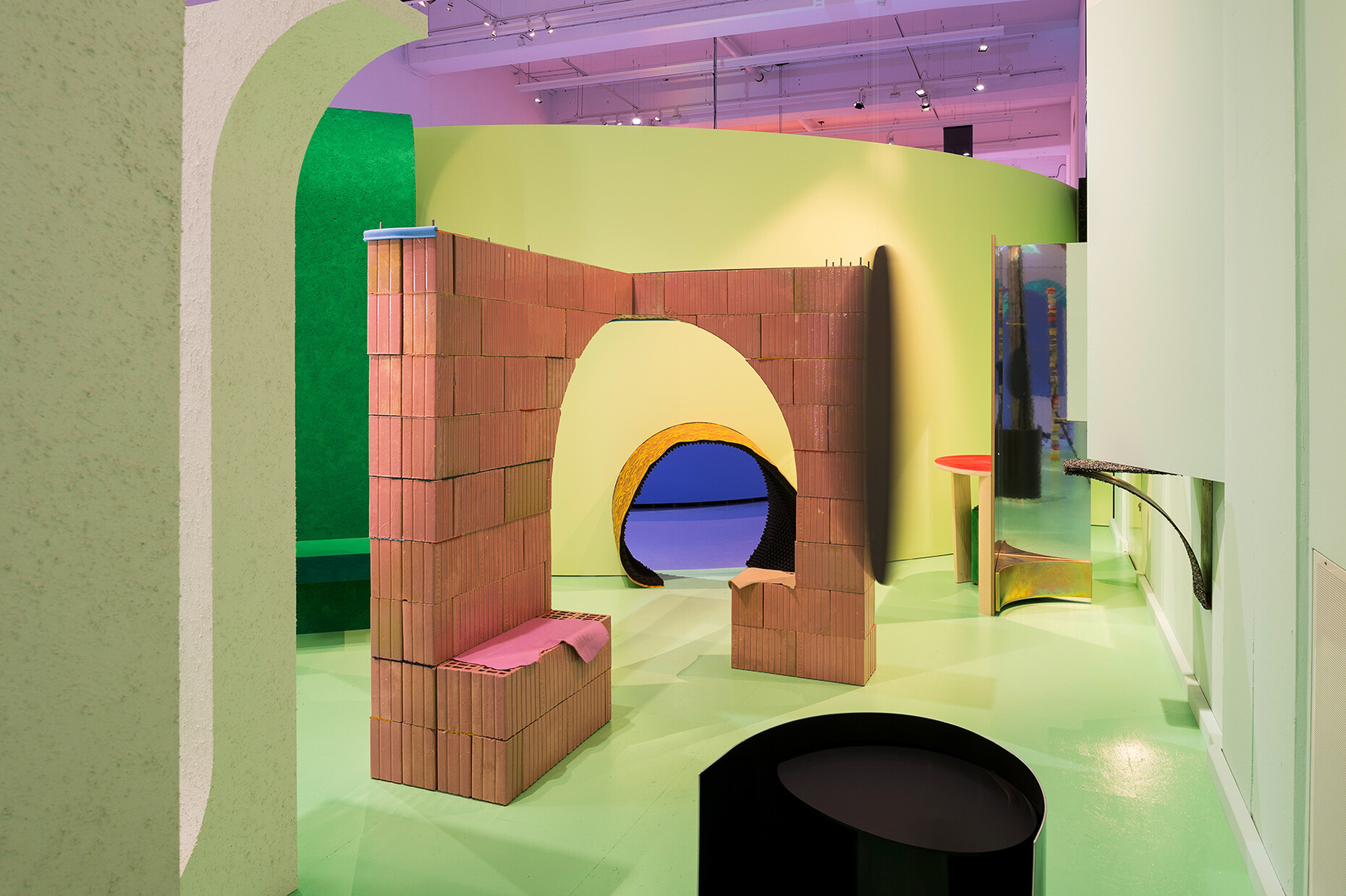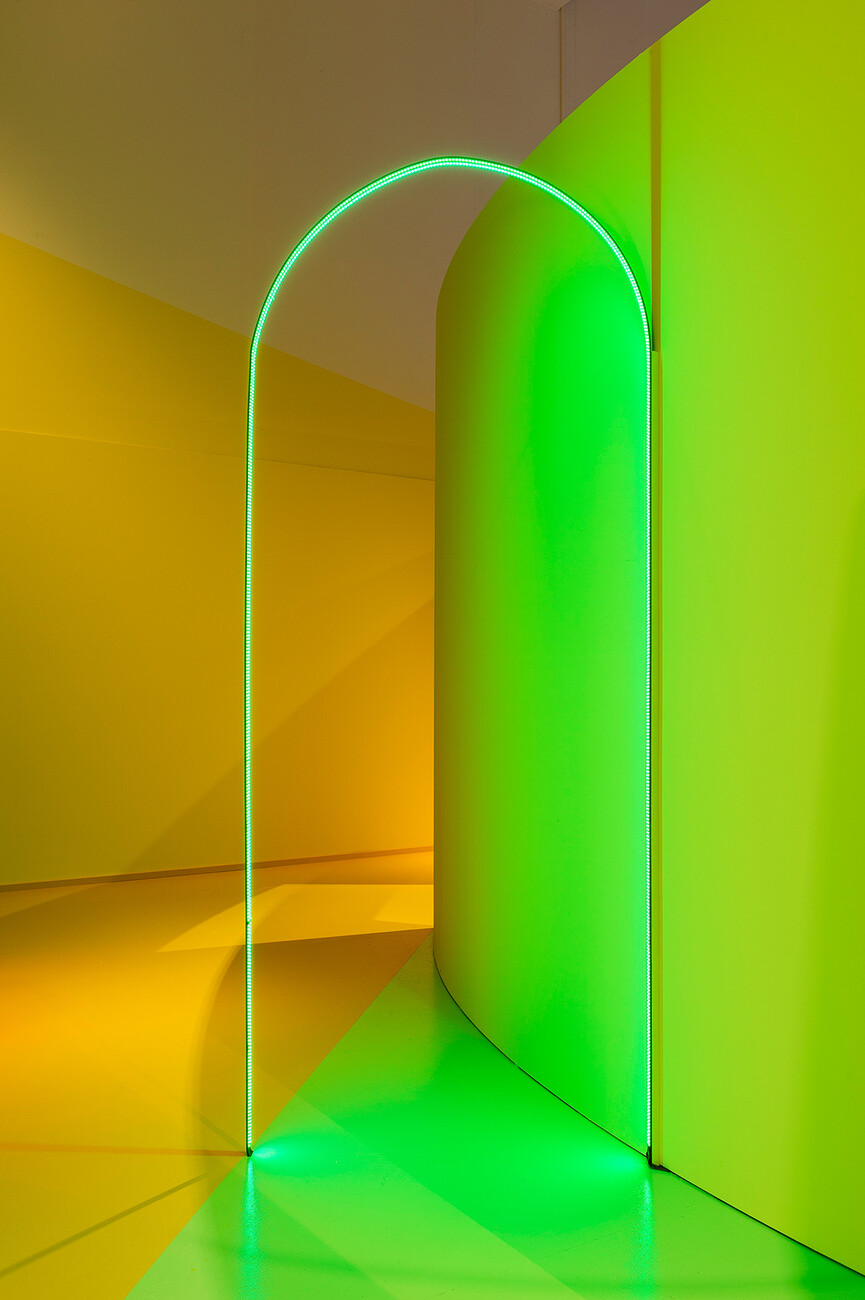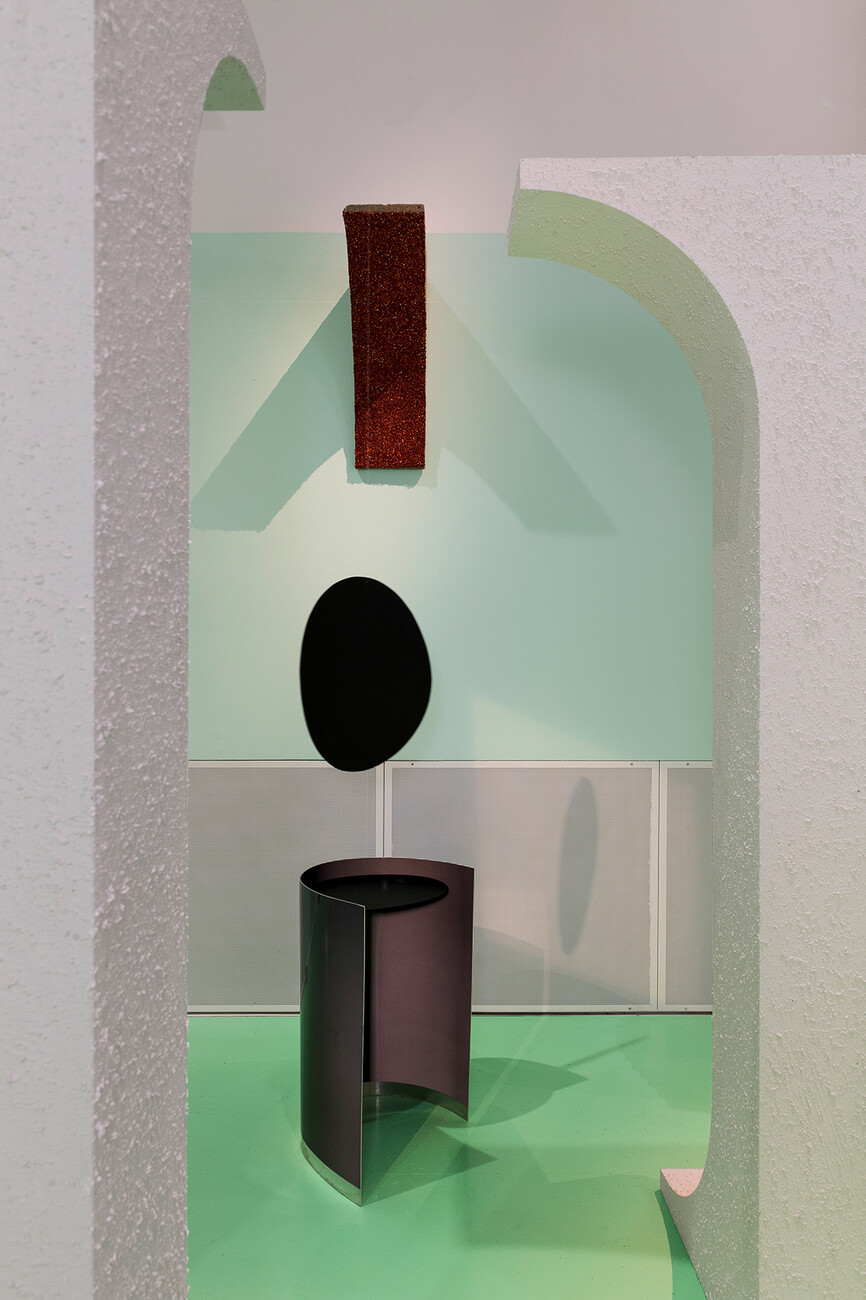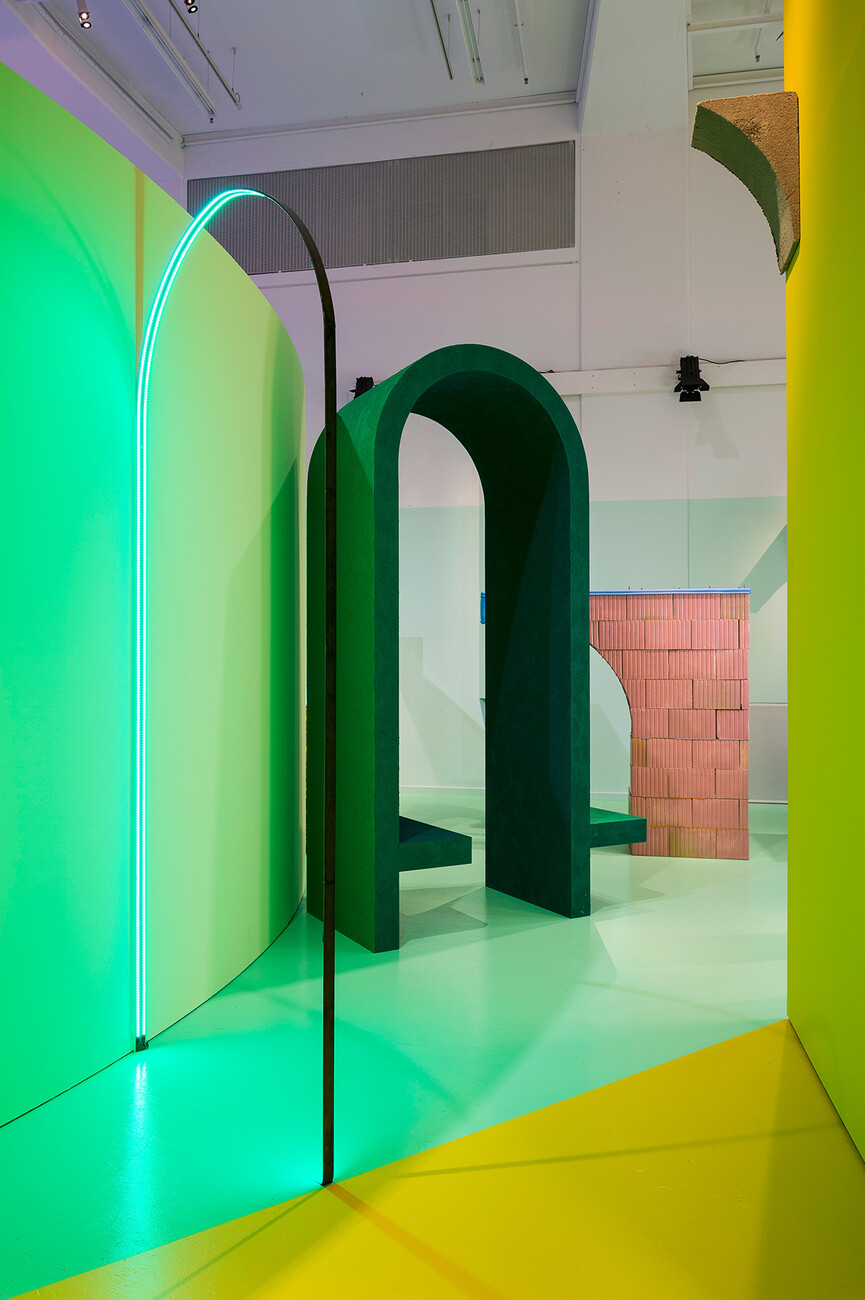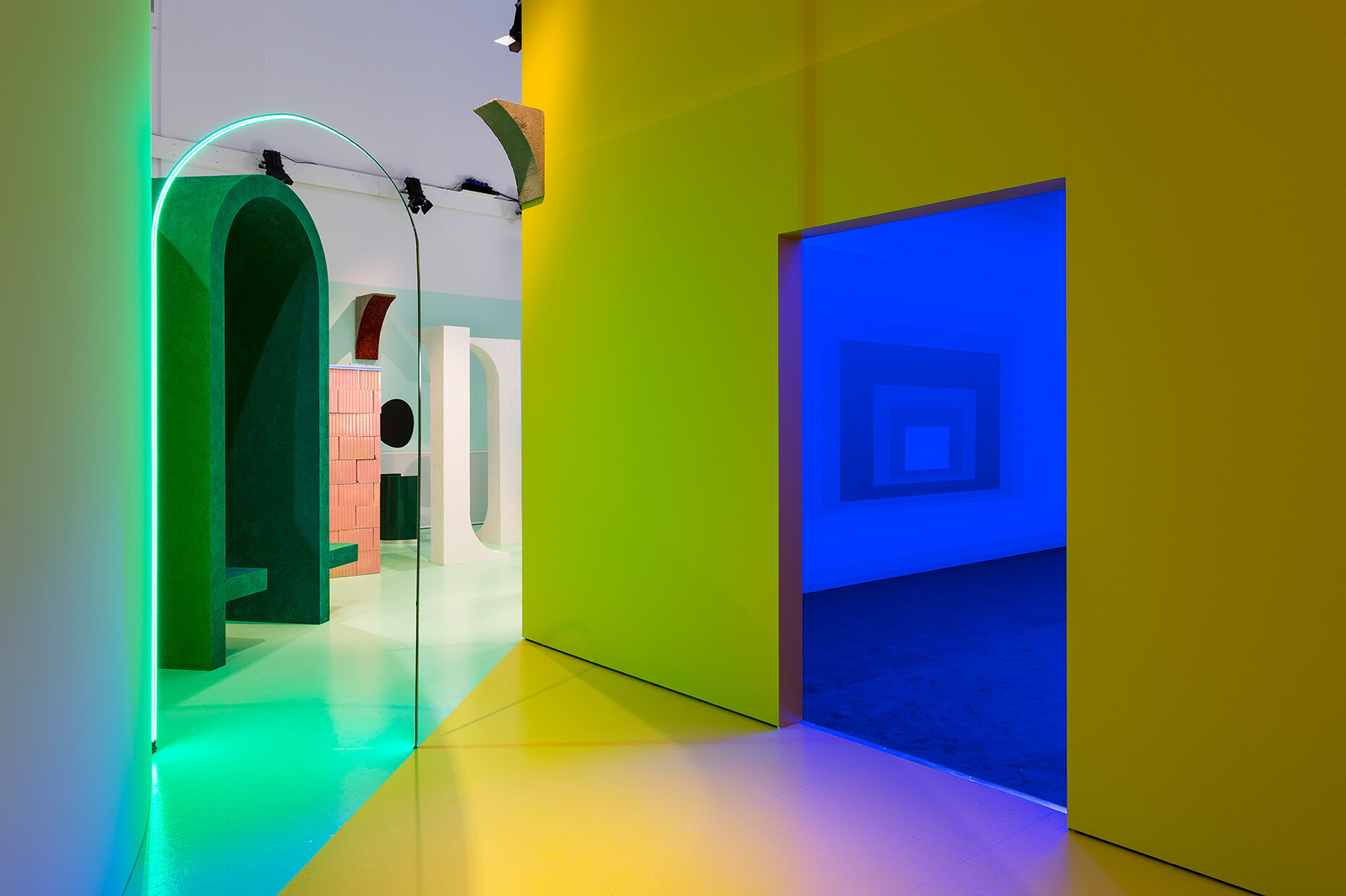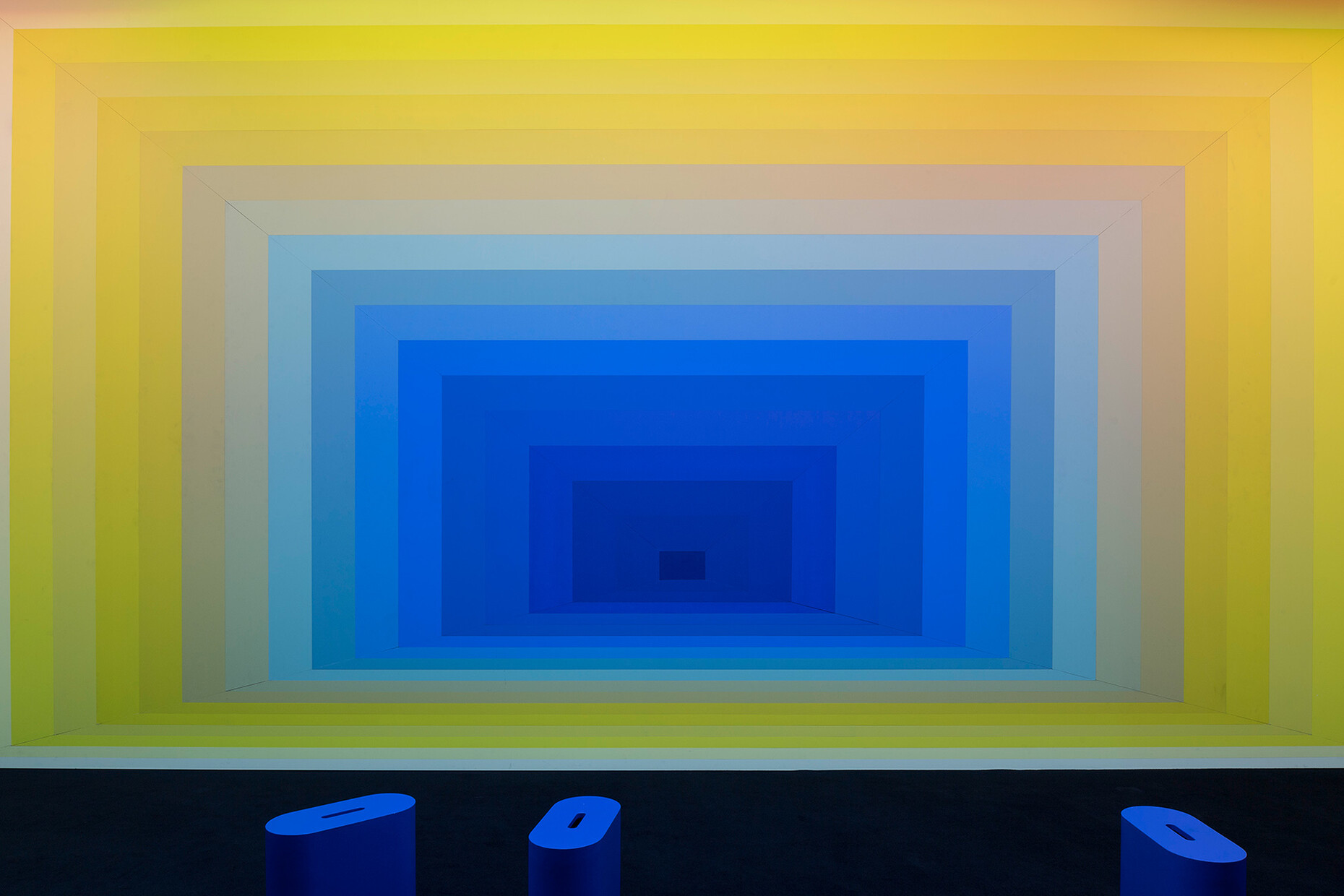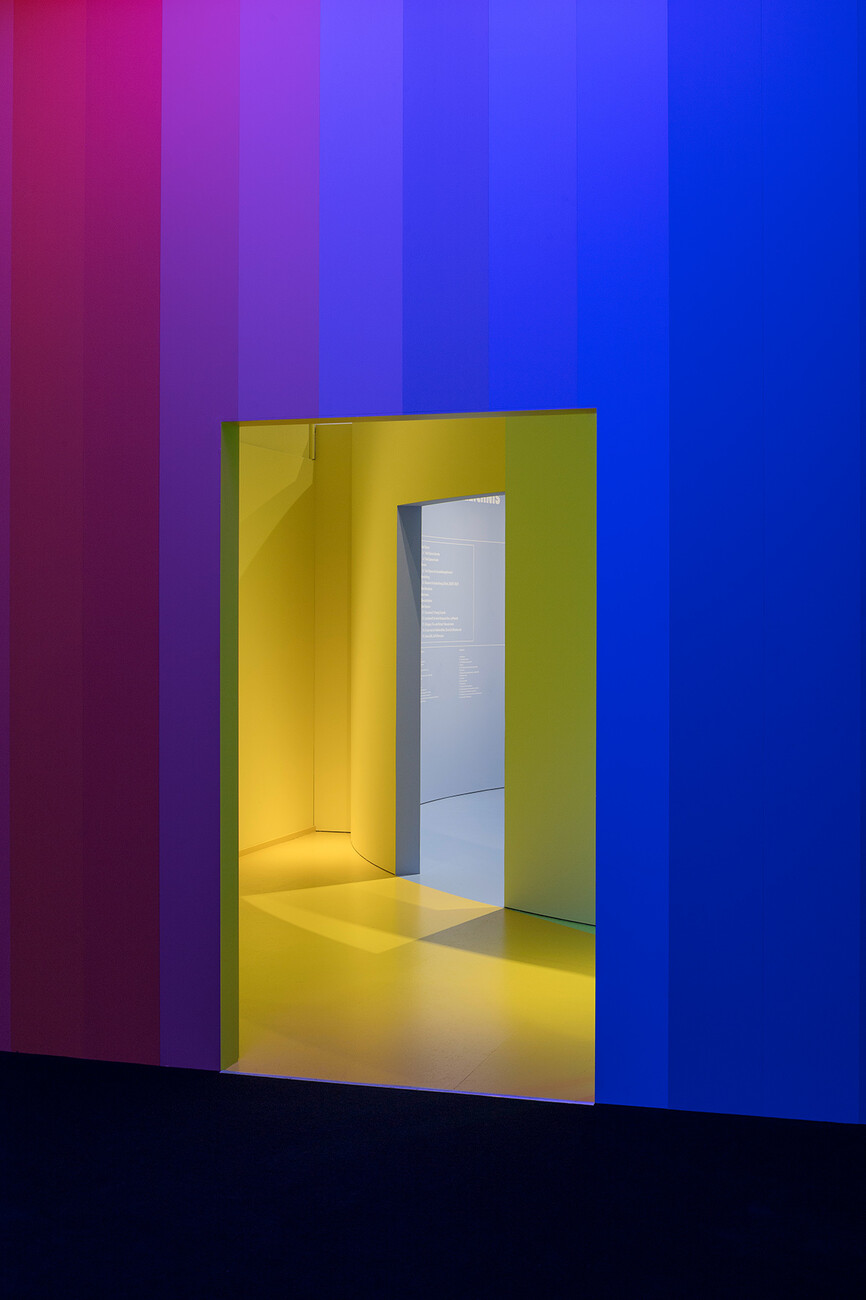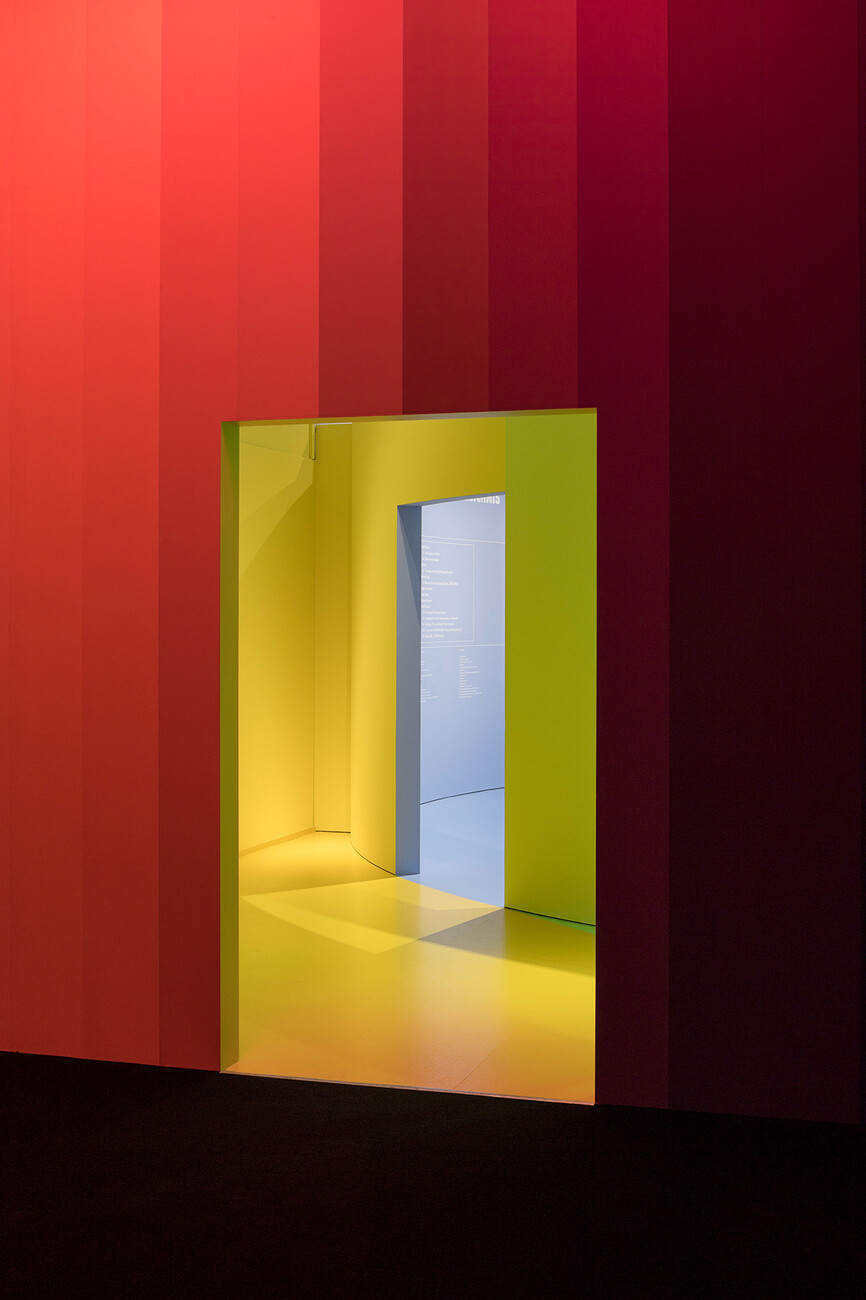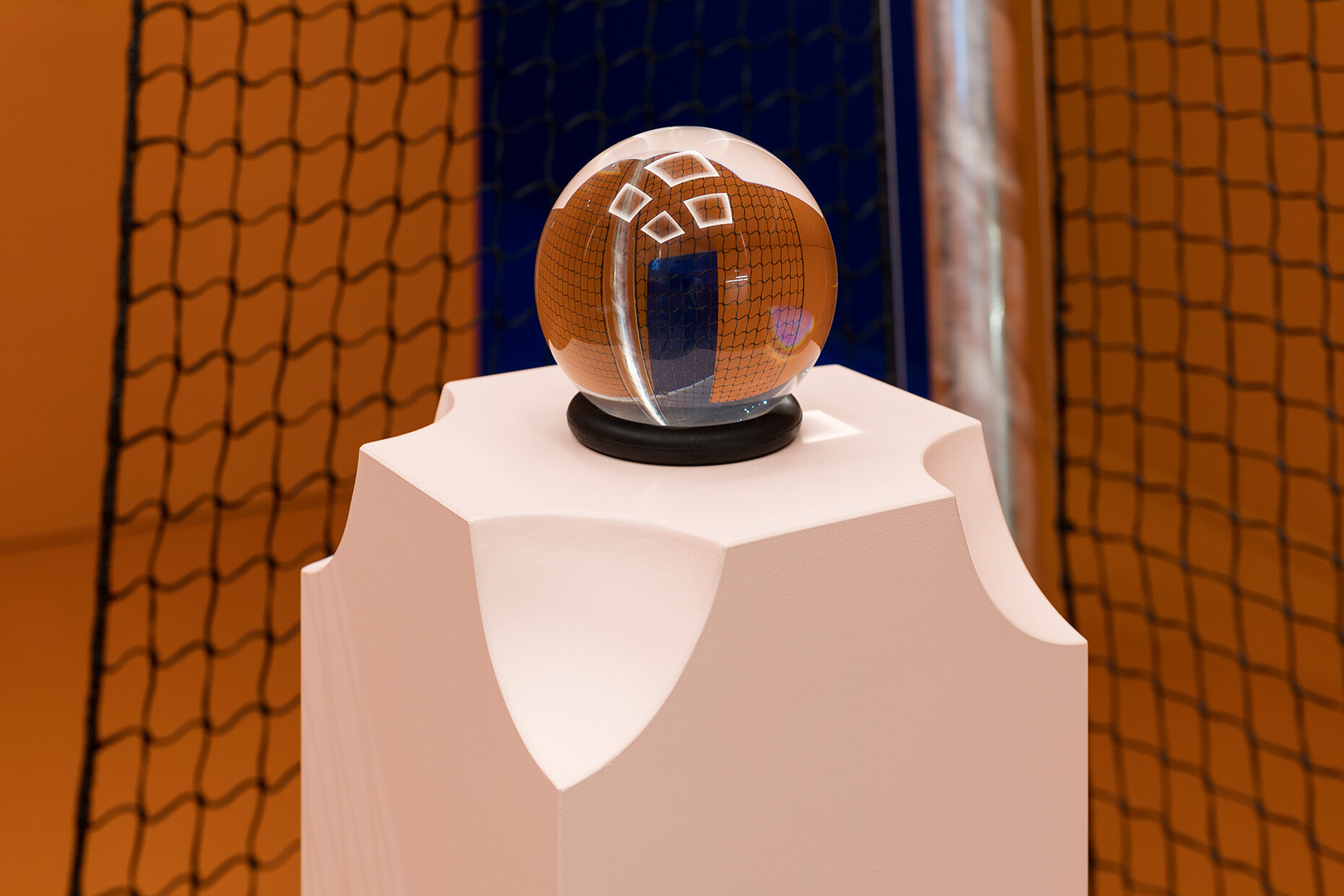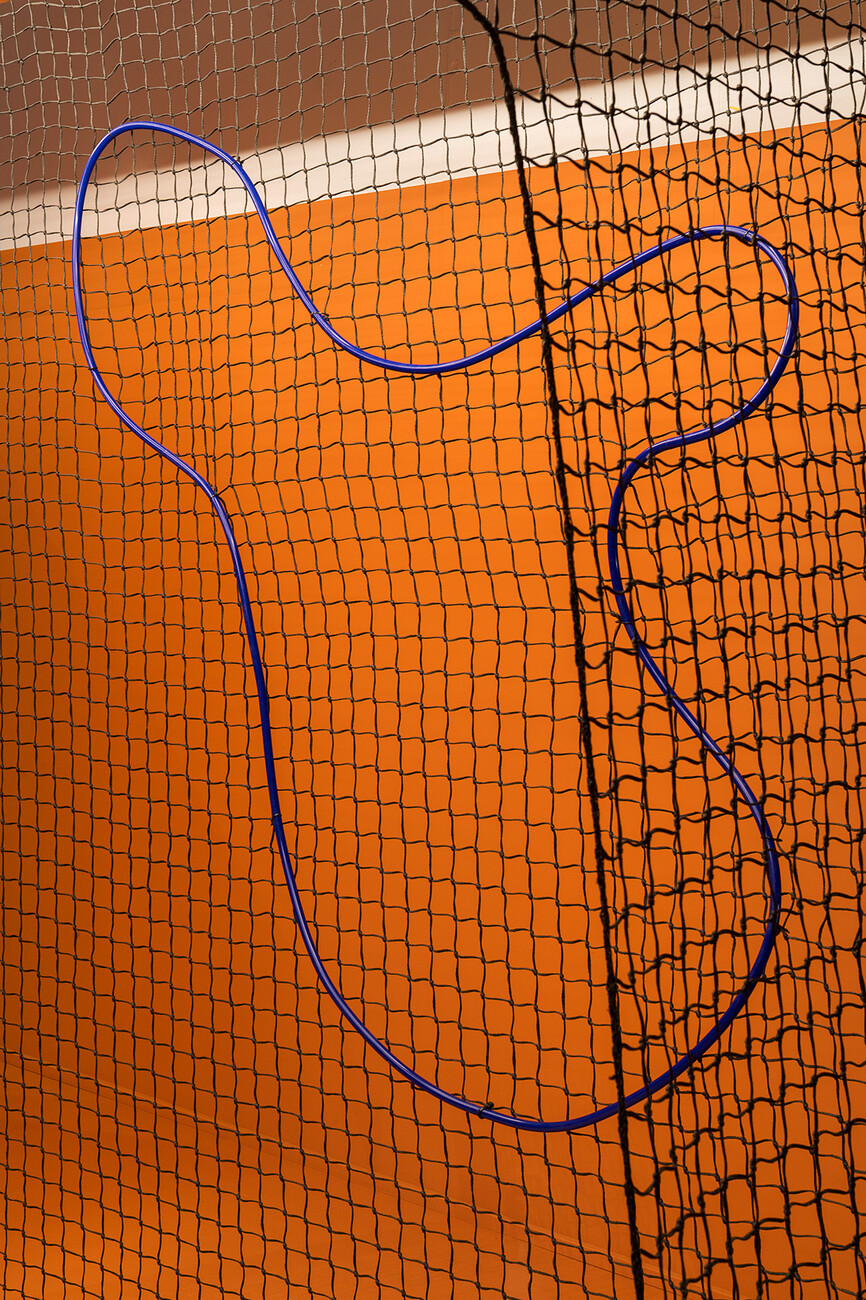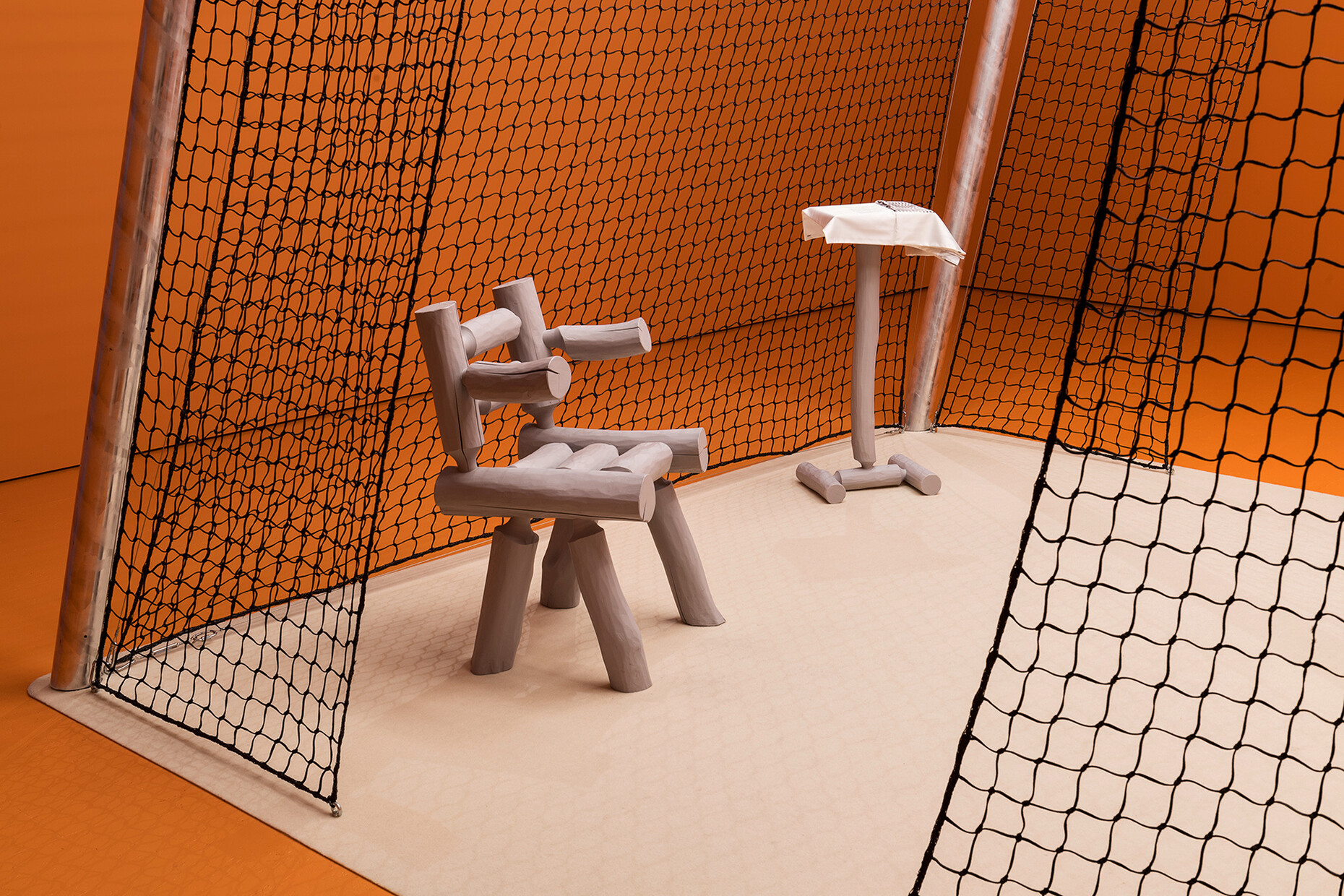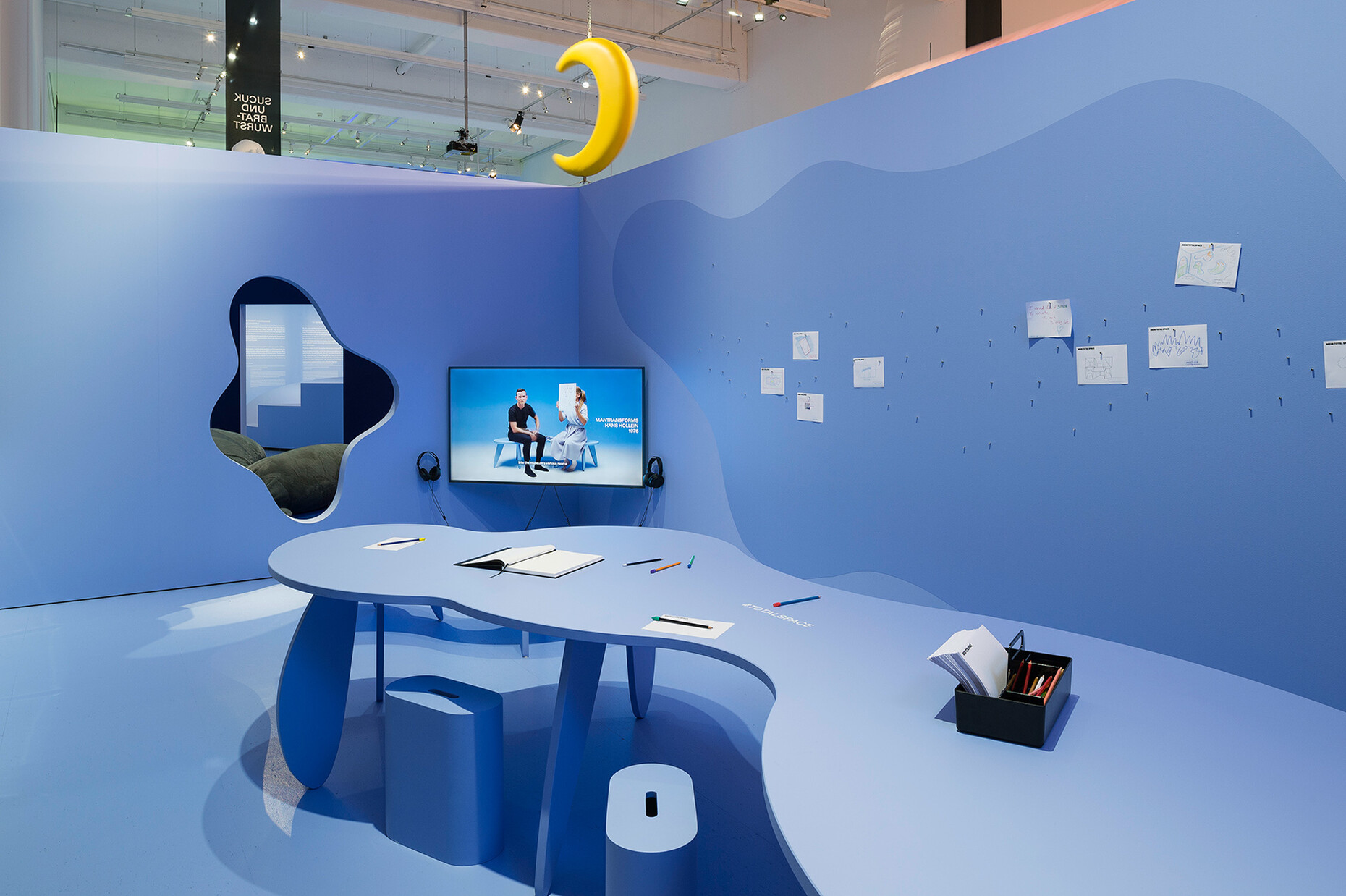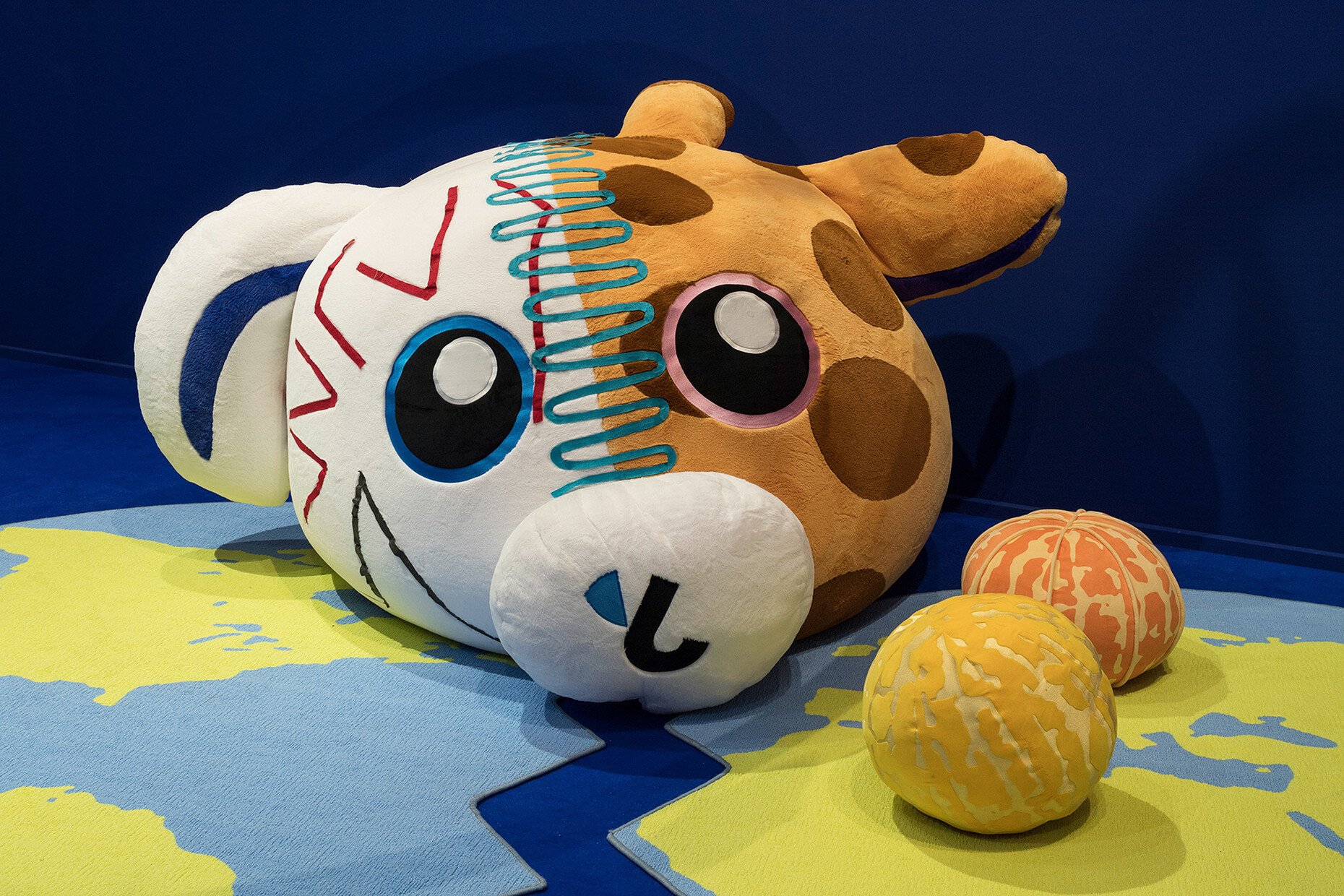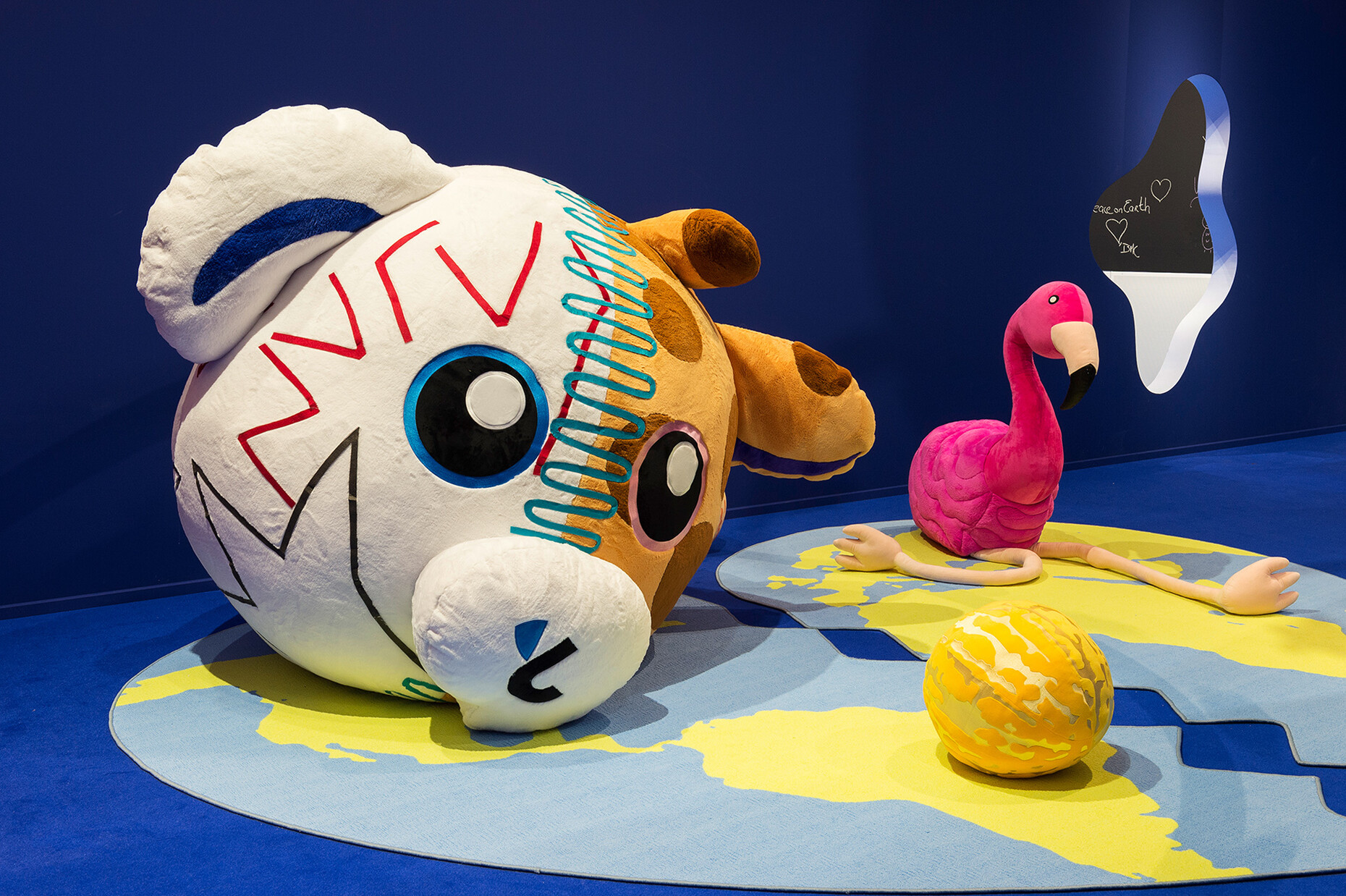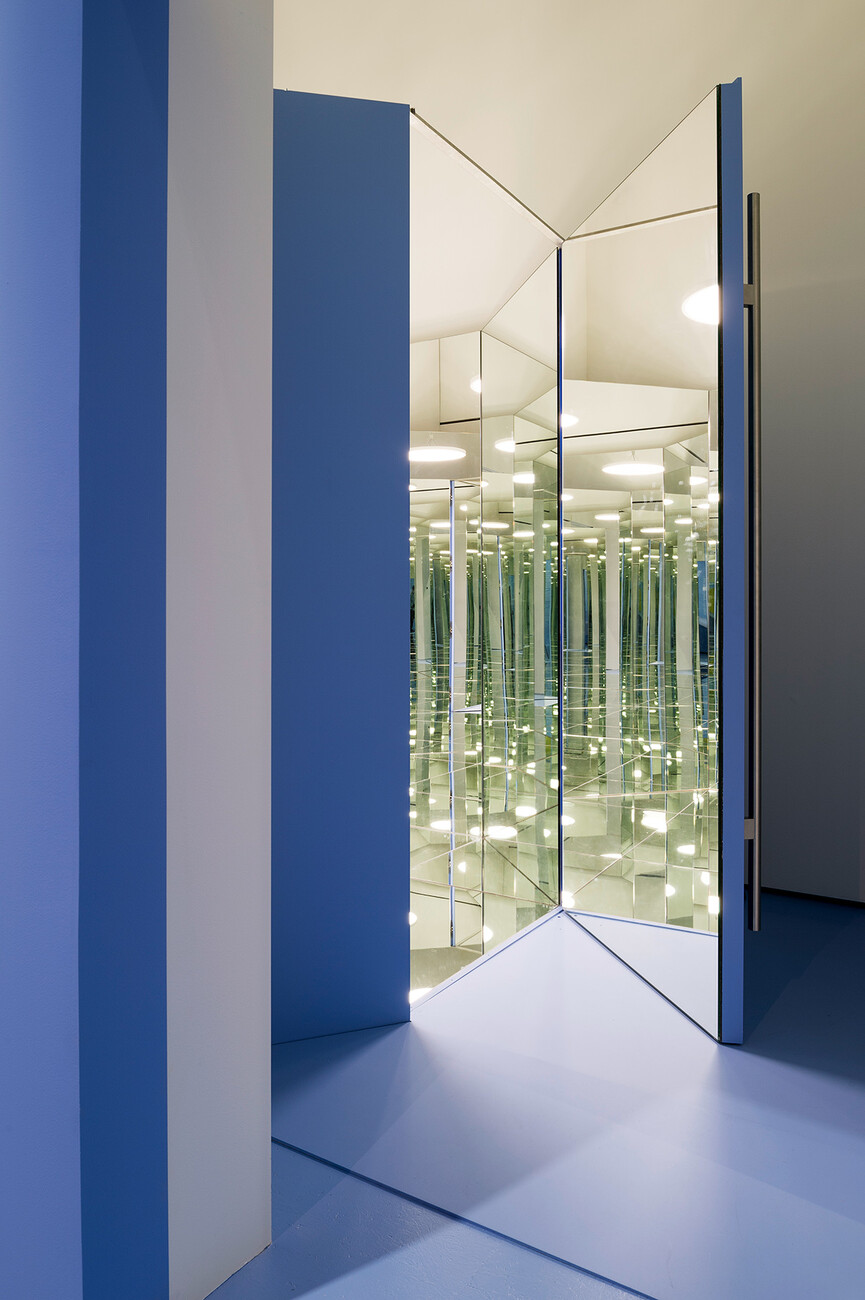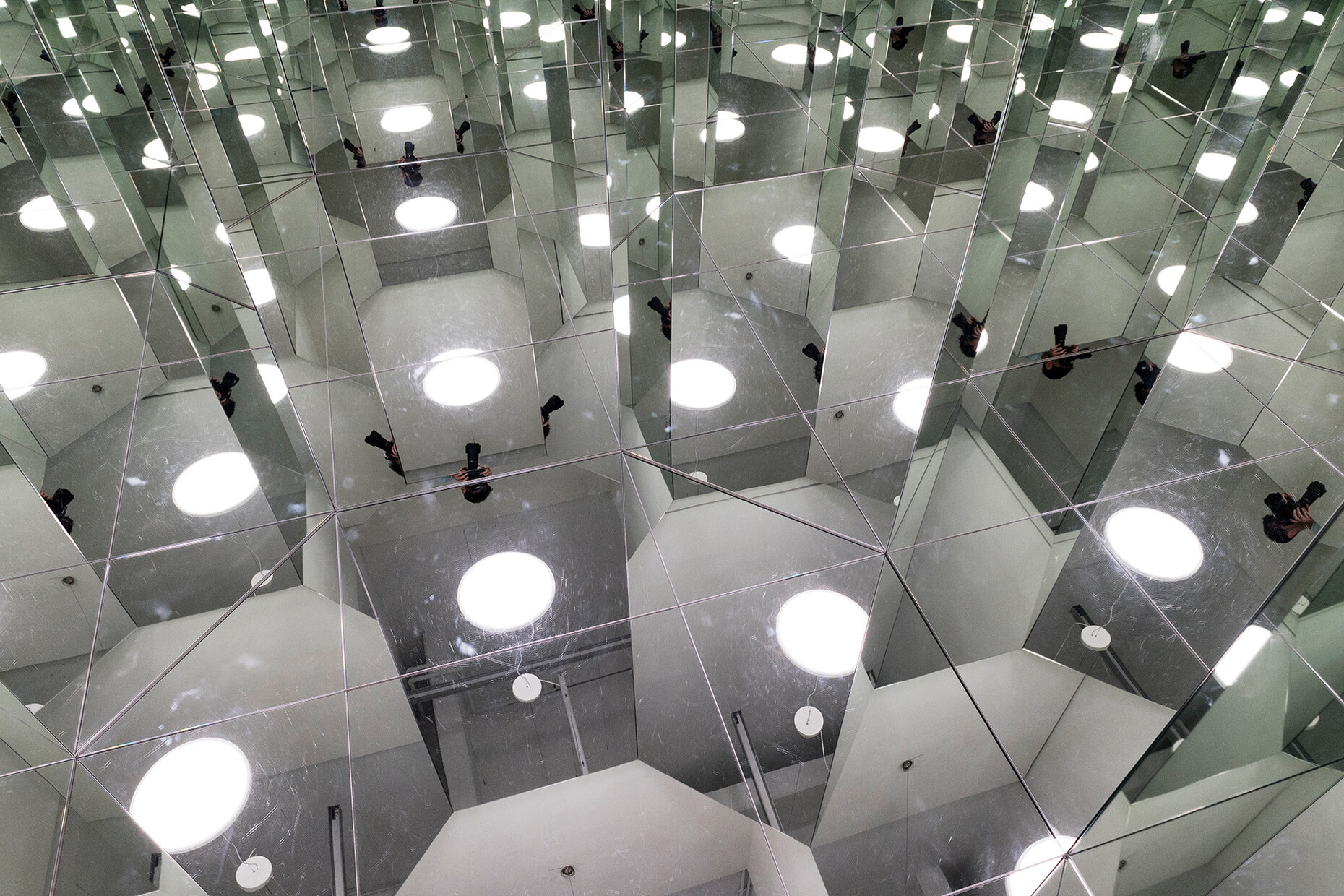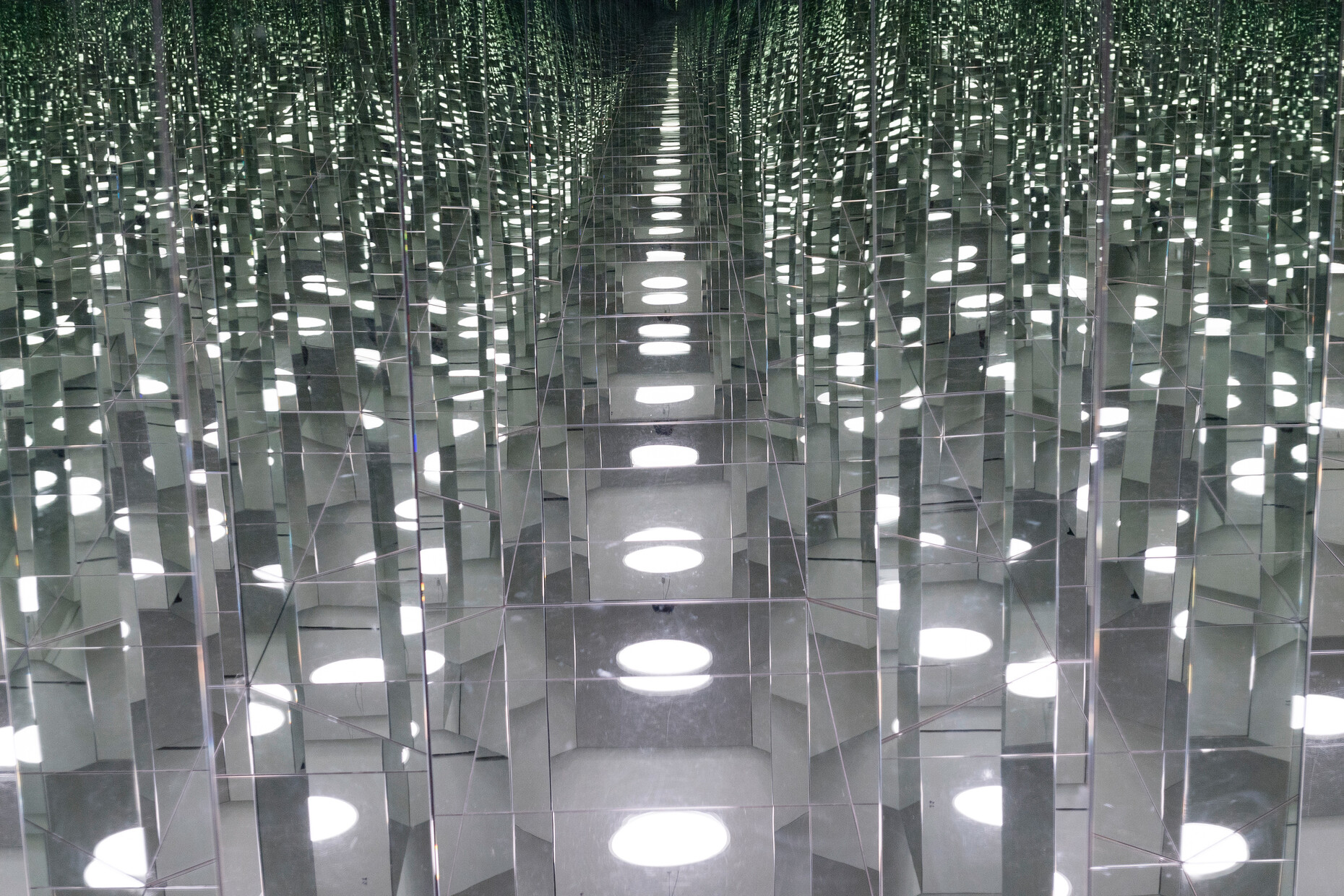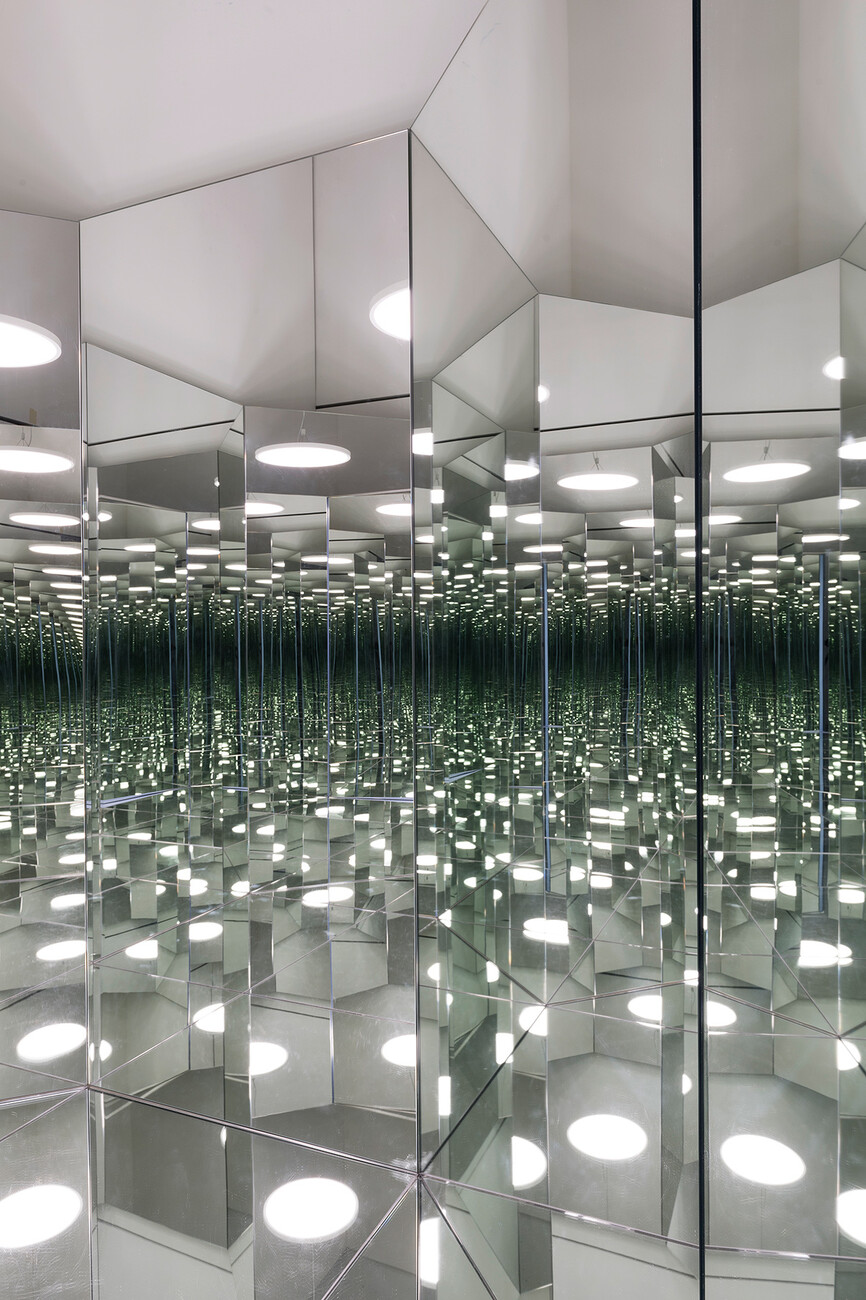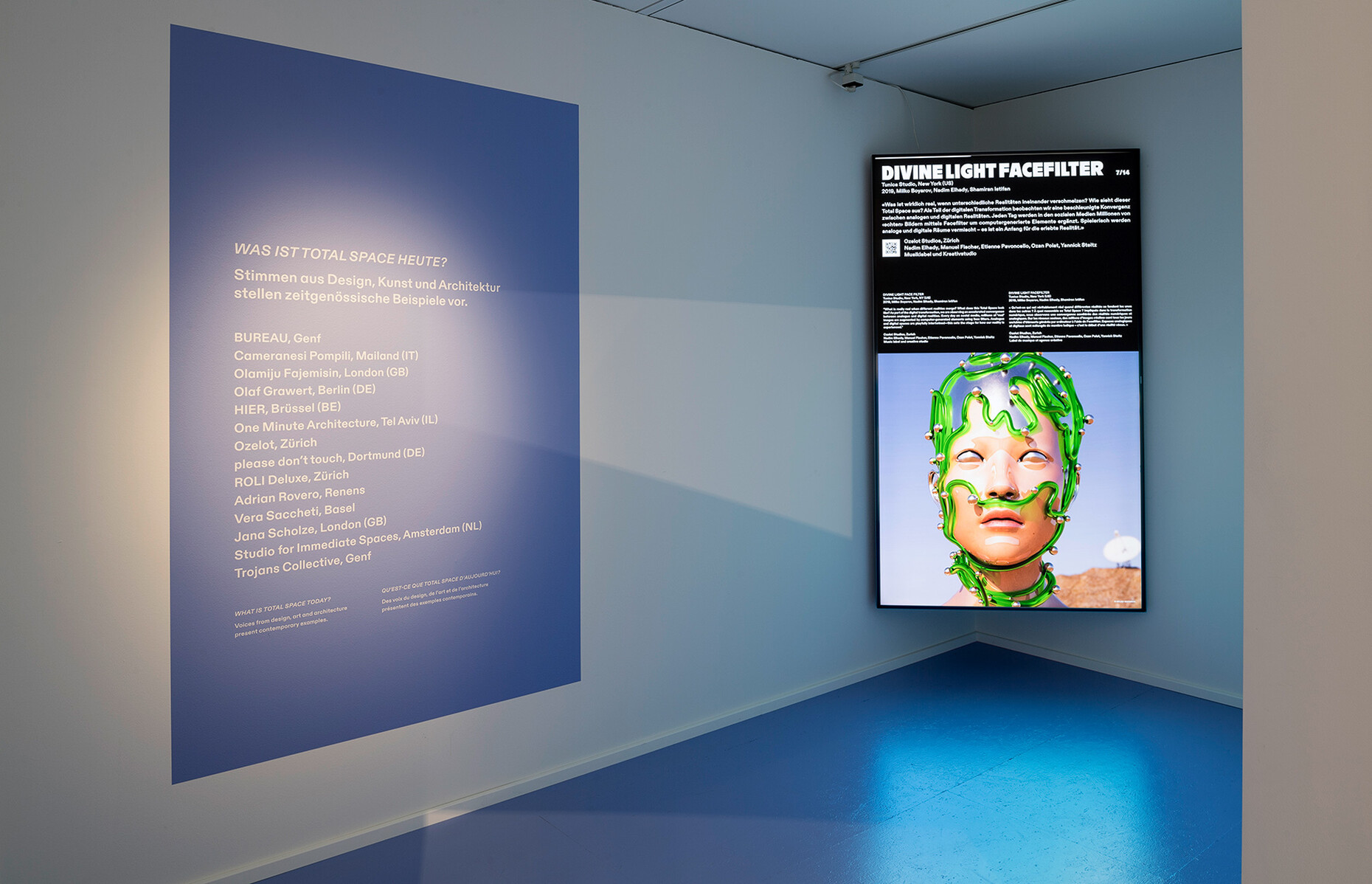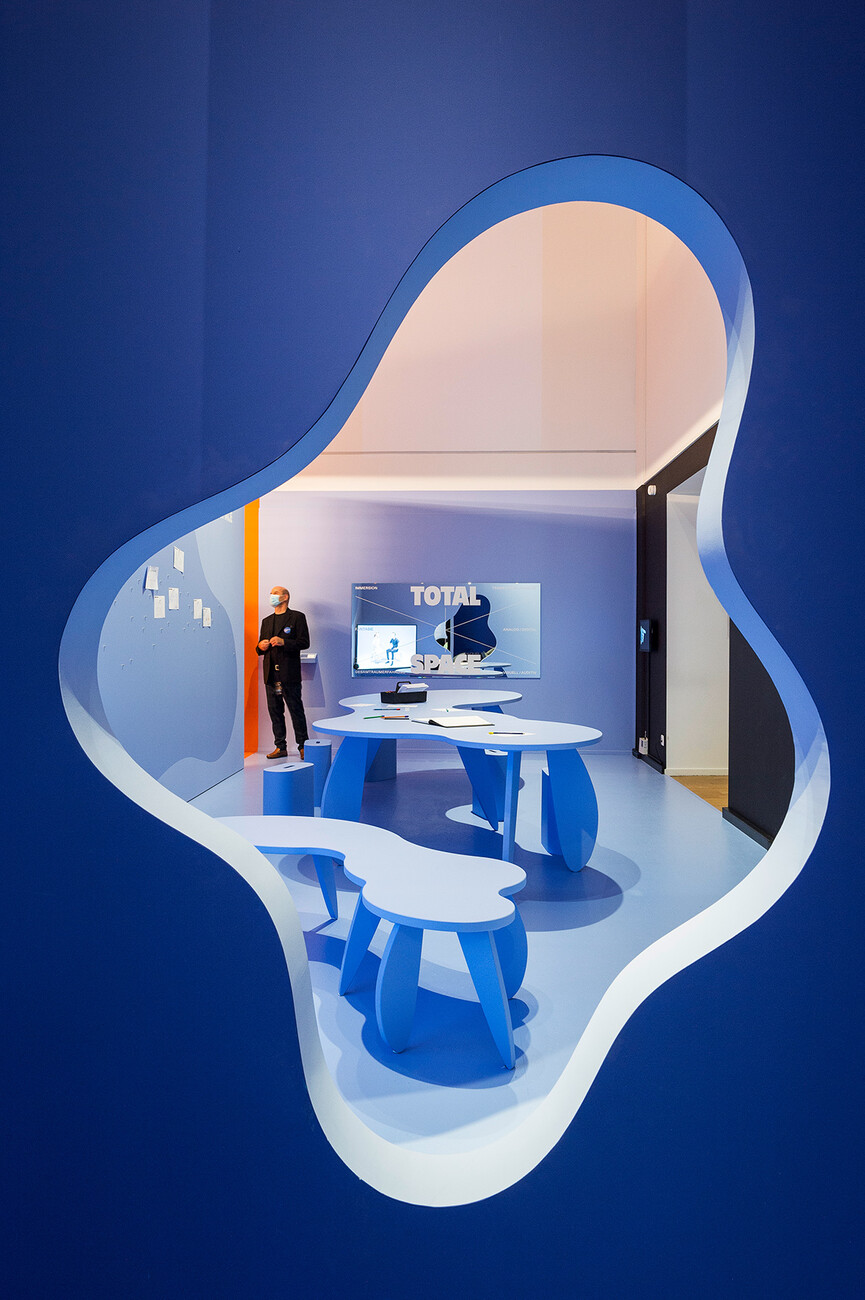Three questions to: Matylda Krzykowski
Anna Moldenhauer: At “Total Space” art is not communicates as some sort of addendum in the accompanying program, the exhibition itself is a single action and interaction. Why should we interact more with design and space rather than just observing it?
Matylda Krzykowski: In my opinion the mission of a museum is not only to act as an educational intermediary, but also as a space for experiences. With "Total Space” Damian Fopp and I had the chance to produce an entire exhibition, you might say a spatial, contemporary exhibit that is not collected and conserved in the traditional sense. Consequently, even allowing for the current hygiene regulations the entire the entire exhibition can be touched and as a result of this interaction for visitors of all age groups their engagement with the content is more profound. This type of presentation includes people rather than excluding them.
Apart from the opportunity for an immersive experience, you seem also to be exploring what it means to move away from the classic “White Cube” as the customary basis for exhibition formats. Why do we need new spaces for design, art and architecture?
Matylda Krzykowski: I am more interested in observation and the challenge of designing a space than the specification of individual objects. An intelligent plan goes beyond the designs that fill out the space. That is at the core of basic needs and altered habits. Above all we need more spaces for creative disciplines that not only address the market and industry, but also deal with existing and possible lifestyles. This type of examination has a lasting impact on society rather than producing short-lived trends.
“Total Space” places the focus on the physical experience of space. Why was it important to you to use parts of the digital world in order to create new analog spaces rather than forming new digital spatial experiences?
Matylda Krzykowski: My work involves dealing with digital and physical spaces. And I make no distinctions because it is, after all, one world. However, I do believe that digital formats are more advanced, while existing physical formats are in need of an update. This has become more urgent as a result of the pandemic and this has also shaped the decisions relating to the curating and scenography of Total Space. For example, rather than installing a curatorial text at the start of the exhibition we were guided by Wikipedia, the best-known digital knowledge database. This digital platform has provided a structure that is known worldwide and is read and understood by everyone. This structure is realized in a round space at the center of the exhibition that allows visitors not only to observe the text content but also experience it through immersion.
We also used two-meter-high screens for the 26 voices from art, design and architecture who have commented on the possible history and present of Total Space. We worked with a familiar visual element, the time line from Instagram Stories which indicates the period of time for the observation. In addition, the many Zoom talks with the five studios that shaped Total Space provide an insight into current working methods. And finally, Damian Fopp and I are always present through a video entitled “Serenity TV”. In the Pantone code, Serenity is the color that characterizes the entire exhibition and simultaneously an appeal to visitors for calm.
Total Space
To 20.6.2021
Museum für Gestaltung Zürich
Toni-Areal
Pfingstweidstrasse 96
8005 Zürich
